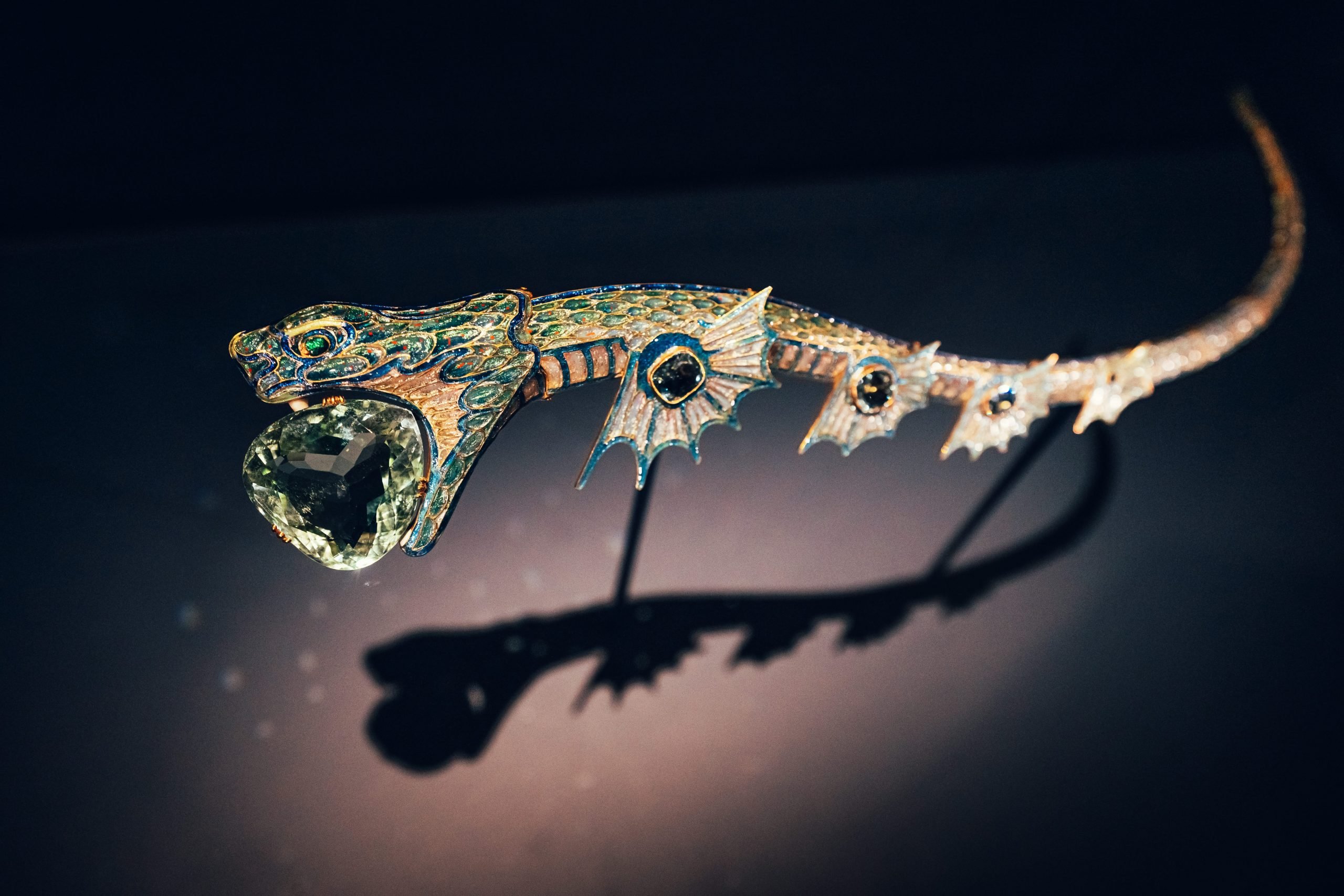
There is no dearth of high-jewelry museum shows these days, but “Végétal–L’École de la beauté”—unveiled by the French haute jeweler Chaumet at Paris’s Palais des Beaux-Arts earlier this month—represents the top tier of this subgenre. Pairing the heritage house’s intricate botanical designs with a wide range of artworks that span historical eras, the exhibition achieves the rare feat of enhancing our understanding of both art and science.
Installation view of “Végétal: L’École de la beauté,” at the Palais des Beaux-Arts, Paris. Courtesy of Chaumet.
A release states that the premise is the “timeless characteristics of plants in an intersection of visions, eras and media.” In other words, it’s about beauty, the richness of it in the natural world and humanity’s quest to honor and emulate it.
The thoughtful, meditative selection features about 80 examples of the 242-year-old maison’s expertise to wow collectors and gem aficionados—such as a pearl-inlaid holly-leaf brooch from 1890 that looks as modern as a gold-and-diamond blade of wheat earring from 2015. But the accessories serve to accent the art on display, as the show is more heavily weighted toward the 400 works of painting, sculpture, textiles, furniture, and photographs.
Francois-Regnault Nitot (1779–1853), wheat-ear tiara in gold, silver, and diamonds. Courtesy of Chaumet.
More than 70 institutions, including the Victoria & Albert, the British Museum, and the Hamburger Kunsthalle, lent works from their collections for the occasion. It’s a roster of heavy hitters: Eugène Delacroix, Henri Fantin-Latour, Gustave Caillebotte, Claude Monet, Gustave Courbet, Emile Gallé, Odilon Redon, and Otto Dix. Photographers include Brassaï, Dora Maar, and Robert Mapplethorpe. Chaumet restored over 30 works for “Végétal,” including the famed “pearl necklace” table that was offered to Louis XIV by Cardinal Barberini, described by the house as a “spectacular testimony to the golden age of Florentine furniture in pietra dura marquetry.”
Jules Fossin (1808–69) ivy-leaf bracelet (ca. 1847) in diamonds, enamel, and natural pearls. Courtesy of Chaumet.
The curator, botanist Marc Jeanson, currently the botanical director of Marrakech’s Jardin Majorelle and formerly at Paris’s Muséum National d’Histoire Naturelle, achieved a delicate balance by mixing a broad selection of works from across millennia. They range from reproductions of ancient cave paintings to present-day photographs, presented in a nonlinear chronology.
You are what you eat: Giuseppe Arcimboldo’s Spring (1573) and Summer (1572). Courtesy of Chaumet.
Jeanson has envisioned a plant-ruled world, and “Végétal” is divided into various landscape “environments,” such as a cave, forest, reed bed, and prairie, imaginatively staged by Adrien Gardère. Each of the installations offers an interpretation idyllic perfection largely devoid of human figures. In fact, aside from 16th-century painter Giuseppe Arcimboldo’s iconic produce-inspired portraits Spring and Summer, the imagery is devoid of the pesky populace. The result is a moving ecological statement, a glimpse of paradise before man invaded the garden.
Barbara Regina Dietzsch, Tulip with Butterfly and Junebug (before 1783). Hamburger Kunsthalle, courtesy of Chaumet.
Dried plants and notes by the French botanist Michel Adanson (1727–1806). Courtesy of Chaumet.
“Végétal: L’École de la beauté” is on view June 16 through September 4 at the Palais des Beaux-Arts, 13 Quai Malaquais, 75006 Paris.